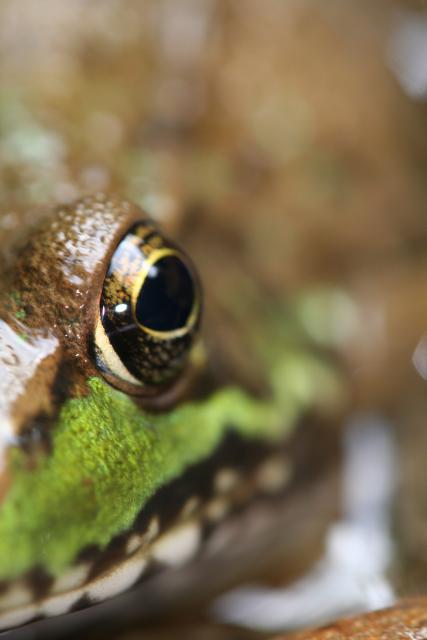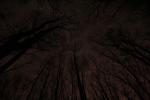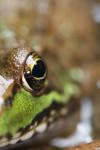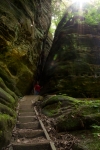Grasshopper at Phipps
ktuli — Wed, 07/21/2010 - 16:01
I don't know if Phipps really likes pests like grasshoppers jumping around their greenhouses, but during out last visit we saw a couple around,
Technical Data: Canon EOS 7D, Tamron 180mm f/3.5 Di SP LD 1:1 Macro, 1/330 sec at f/9.9. ISO Auto. Canon Monopod. Phipps Conservatory, Pittsburgh, PA.
Why This Photo: Seeing this grasshopper in the conservatory was enough of a surprise and different subject for in the gardens, that it was a pleasant alternative to the usual subjects there. I would have liked to have shot with a tripod, but at least the monopod helped a bit.
What Works: I like the tack sharp focus coupled with just the right amount of depth of field. The foreground flower and grasshopper are in focus, but the background is soft and the additional blurred flower provides a nice reference point and additional focal 'distraction' for multiple points for the viewer's eyes to wander to.
What Doesn't Work: The framing might be better slightly pulled back to not cut off the flower in the foreground, or alternatively just a lower angle shot to get more of profile shot of the grasshopper.
Do you see anything you like or dislike about this photo? Drop me a comment and let me know.
- Bill
Daredevil Snail
ktuli — Mon, 07/19/2010 - 18:20
Bouncing back to Atlanta for today's post.
I noticed this little snail crawling along the razor's edge while we browsed the Atlanta Botanical Garden. One slip the wrong way, and this tiny guy would end up in a very unpleasant ending.
Technical Data: Canon EOS Digital Rebel XT, Canon EF-S 18-55mm f/3.5-5.6 II at 55mm, 1/60 sec at f/5.6, ISO 400. No post production. Atlanta Botanical Gardens, Atlanta, GA.
I am going to skip the full critique of this photo. It lacks tack sharp focus due to the lack of the use of a tripod. I'm sure there are plenty of other things I could find wrong with it if I tried, but I like this photo a bit too much to tear it apart.
If anyone cares to critique it a little more, feel free to do so in the comments - I know I said I didn't want to critique it, but I'm always interested to hear what others think of some of my photos.
- Bill
Horseshoe Falls & Light Rays
ktuli — Fri, 07/16/2010 - 18:09
I need another trip up to Niagara Falls. It has been almost three years since I was there last, and it has always been one of those places I've really liked - ever since I was a child. I remember going with my family when I was younger, and the most recent trip was made specifically to get engaged, so obviously it holds special meaning for me.
I know I just got back from vacation not too long ago, but I could use at least a quick weekend trip.
Technical Data: Canon EOS Digital Rebel XT, Canon EF-S 18-55mm f/3.5-5.6 II at 27mm, 1/320 sec at f/13, ISO 100. No post production. Niagara Falls, Ontario, Canada (yes, if you want to go to NF, it really is only worth going to the Canadian side).
Obviously, the main challenge with photographing Niagara Falls is to capture the power of the falls, and the awe inspiring nature of it, and the absolute grandeur of something that can't help but make you feel the overwhelming feeling that this world is shaped by forces far beyond our comprehension. Good luck... ;)
- Bill
Frabel Cube
ktuli — Wed, 07/14/2010 - 19:32
Back in 2007, Anya and I made our first trip to Atlanta. We visited the Atlanta Botanical Garden and came away with plenty of good shots. Previously, I shared some photos of an installation called La Cabeza by Nikki de Saint Phalle.
This one is called Large Cube with Imploded Spheres by Hans Godo Frabel.
Technical Data: Canon EOS Digital Rebel XT, Canon EF-S 18-55mm f/3.5-5.6 II at 34mm, 1/400 sec at f/16, ISO 400. No post production. Atlanta Botanical Gardens, Atlanta, GA.
Why This Photo: This installation was installed above a fountain in the center courtyard of the gardens, and the sunlight catching off the glass just sparkled and shimmered in the whole courtyard throwing mini-rainbows everywhere.
What Works: The diagonal lines produce an intriguing framing with the green spheres providing a nice balance to the photo by occupying approximately a third of the shot. Though obviously blown-out, the sunburst glare of the sun refracting through the glass is a very nice touch to capture some of that feeling of being there in the courtyard with the bright sun shimmering through the piece.
What Doesn't Work: The whole shot could possibly use a little darkening to make for a richer blue color in the sky, and a bit more pop to the green color of the imploded glass spheres. Focus is a touch off, and more detail showing the intricate patterns within the spheres would have been nice too.
I think we may have seen this installation somewhere else another time, but I can't remember where.
This is another photo that has been submitted to the Photographic Section's digital projected image competition.
Leave me a comment and let me know what you think of this photo.
- Bill
Strange Polarized Clouds
ktuli — Mon, 07/12/2010 - 19:26
I can't explain what happened in this photo. I'm sure I did something wrong, but I don't know what it was. Maybe someday I'll learn how to explain it, but for now, it just looks weird.
Technical Data: Canon EOS Digital Rebel XT, Canon EF 35-80mm f/4-5.6 III at 35mm, 1/200 sec at f/10. ISO 400. Circular polarizing filter. No post production. Virgin Run Lake, Fayette County, PA.
We only have one polarizing filter and it only fits a couple lenses that don't get much use, but I made a point of trying it out one Saturday last October. Anya and I had been out looking for nice fall foliage (which as you can see by the photo, we were a bit early for even at this point in October) and stopped by Virgin Run Lake.
A polarizing filter works by reducing light of a specific wavelength - for all functional purposes, this means reflections. Since most reflections from the same source will have the same wavelength, the filter is able to reduce it enough to make it appear to remove it. You may notice that the sky is much bluer (not in this photo) in photos with a polarizing filter, this is because the filter is working on reflections from water particles in the air, thus producing the bluer color.
However, in this photo, I must have had the filter turned the wrong way (circular polarizers work by rotating to filter the wavelength of light you prefer), which resulted in a very flat sky and fake looking clouds.
What do you think?
- Bill
Green Frog Close-up
ktuli — Sun, 07/11/2010 - 20:13
I stumbled upon this green frog (Lithobates clamitans) while hiking along in Linn Run State Park. I was actually hiking along the stream bed and had startled a couple of these frogs into hiding before I refined my technique to more carefully approach the frogs to get close enough to get some close-ups.
I was shooting handheld that day, and at this point was standing in about a foot of water and was holding the camera level with the surface of the water about six inches above the water, so I was not able to look through the viewfinder. Every once in a while, I intentionally shoot without using the viewfinder just try different angles and perspectives.
Technical Data: Canon EOS Digital Rebel XT, Tamron 180mm f/3.5 Di SP LD 1:1 Macro, 1/60 sec at f/4.5. ISO 400. No post production. Linn Run State Park, Rector, PA.
Why This Photo: This frog actually had some defect with its right eye - almost like a cataract - that made it cloudy and white. After a couple other shots, I decided to eliminate the problematic eye and try for this shot with only the good eye. It took a few shots to get the framing right without using the viewfinder, but eventually I came up with this.
What Works: The framing of this shot seems to work just right for me. The eye of the frog rests on one of the vertical thirds of the shot, and the green along its face produces a nice diagonal that draws the viewer's eye into the photo. Also pleasing is the shallow depth of field and the area of focus right at the frog's eye.
What Doesn't Work: If I could have used a tripod and managed a longer shutter speed, then a smaller aperture for more depth of field may have made for a nicer photo by showing off more of the texture of the frog's skin.
I have submitted this photo to the Photographic Section's Digital Projected Image Competition in 2010 as well as the George W. Glennie Memorial Nature Salon 2010.
I really do need to get out on some more photo excursions soon.
Leave me a comment and let me know what you think of this photo.
- Bill
Red, White, and Kaboom!
ktuli — Mon, 07/05/2010 - 19:37
Well, fireworks photography is a bit harder than everyone said - then again, if it were easy, everyone would do it.
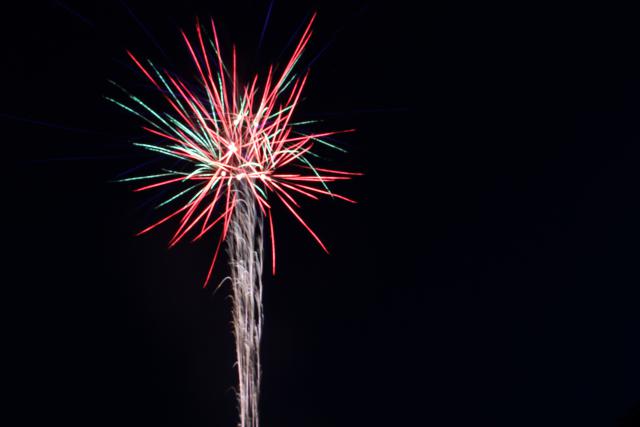
I'll share more later with some of the details (but after two days worth of holiday festivities and and morning hockey both days and then some emergency plumbing today, I'm just going to relax and watch some TV this evening).
- Bill
AdoramaTV: Fireworks
ktuli — Sat, 07/03/2010 - 16:03
Well, that last post with the night sky photography seems to hit right in time for some more night sky photography - fireworks!
I plan on trying my hand at getting some explosive shots this weekend, so I took a look for some pointers. Check out this video from AdoramaTV.
Good luck if you try and photography this weekend, and have a safe and happy 4th either way!
- Bill
Black & White & Bronze
ktuli — Fri, 07/02/2010 - 21:30
I've been waiting to post this photo for some time now, and actually, I've had this reason for a while but have just had a couple sets of photos (Kanawha 1, 2, 3, 4, 5, 6, 7, 8, 9 and Cozumel 1, 2, 3, 4, 5, 6) that I wanted to post all in a row.
Over a month ago, the Photographic Section had their year end awards dinner. I actually didn't even attend (being a new member I don't know too many people in the club and wasn't sure of what the dealie was with the dinner)and had completely forgotten that I had two photos that had received honorable mention in the previous in-house competitions and qualified for the 2009-2010 Year End Compeition that is judged by external judges.
This photo received a bronze medal for the Monochrome Projected Digital Image portion of the competition...
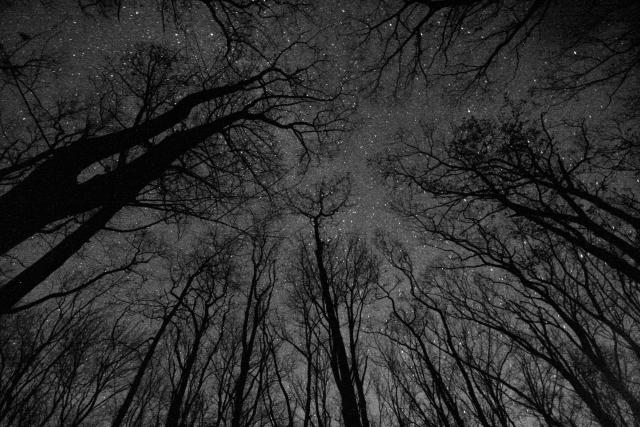
Technical Data: Canon EOS Digital Rebel XT, Sigma 10-20mm f/4-5.6 EX DC HSM AF at 10mm, Unknown manual exposure length as f/5.6, ISO 1600. Converted to B&W and slightly brightened in Photoshop Elements. Laurel Highlands Hiking Trail.
Why This Photo: I took this photo on a hiking trip along the LHHT with some friends. During the trip, I also tried my hand at some light painting, and this was also my first attempt at astrophotography. I really liked the idea of capturing the feeling of looking up at the stars through the trees.
What Works: I liked the shapes of the trees with the starry sky as the background. The curved edges provided by the lens zoomed to 10mm adds a nice additional feel to the size of the trees from that angle.
What Doesn't Work: The thicker tree on the left is a bit distracting, and I wish I could have found a slightly larger opening in the trees for more unbroken star field.
What do you think? The original image is linked to the right. You can see the purplish tinge the sky had from near-by light pollution that I removed in photoshop.
Leave me a comment and let me know if you think this is really a bronze medal winning photo or not.
- Bill
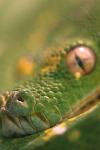
PS: This photo also received an additional honorable mention at the year-end competition, but has already been previously discussed when it got the honorable mention in the in-house judging, so if you're interested click on the photo and read that discussion as well.
Cozumel 2010: Wrap Up
ktuli — Thu, 07/01/2010 - 19:49
So before everyone gets tired of scuba photos (especially ones with bad blue color casts), I'll wrap this set up and we'll get back to some land based photography soon.
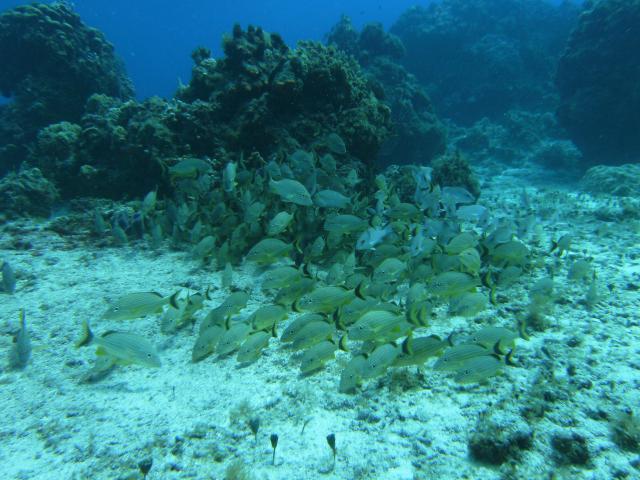
This school of fish sat right at the front of this coralhead where two channels split off to each side. At first, they blended right into the slope of the coralhead. Then as I knelt there getting set to take a photo, the school pulled in close to each other, then spread out, shifting and pulsing to maintain their prized position. It is fun for me to watch fish behavior - whether it be individuals or whole schools of fish. For underwater photography, I feel schools of fish like this fall into a kind of "landscape" photography while still being wildlife photography.
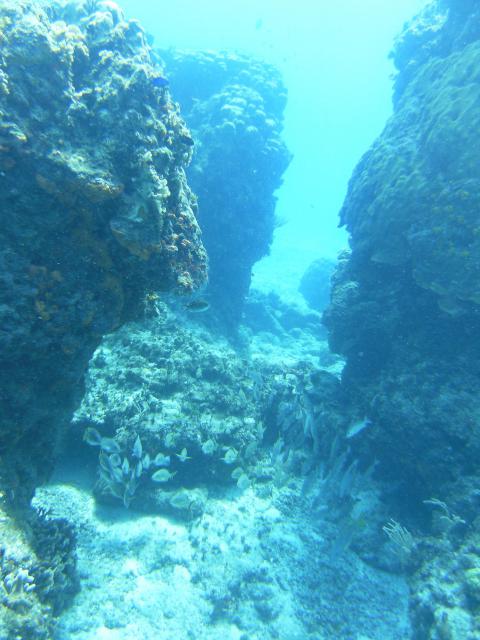
Though this photo is definitely over-exposed, I liked this one as a nice shot of the way the coral and structure is is Cozumel. Our general dive provide per day would be three dives (two morning and one afternoon) - with each dive becoming progressively shallower. The first dives would usually be in the 70-90 feet range, and sometimes would include swim-thrus. In some cases, these swim-thrus would include complete tunnels and other times it would be open like this. This particular set of formations were actually at a more shallow dive site, but some of the sites had formations right out by where the depth drops off into the deep blue. This is usually referred to as 'the wall'. There's something fun yet a bit nerve wracking about being exposed out on the edge of the wall with nothing but deep dark blue next to you - but I do always scan the blue to see if something cool might make a brief appearance there.
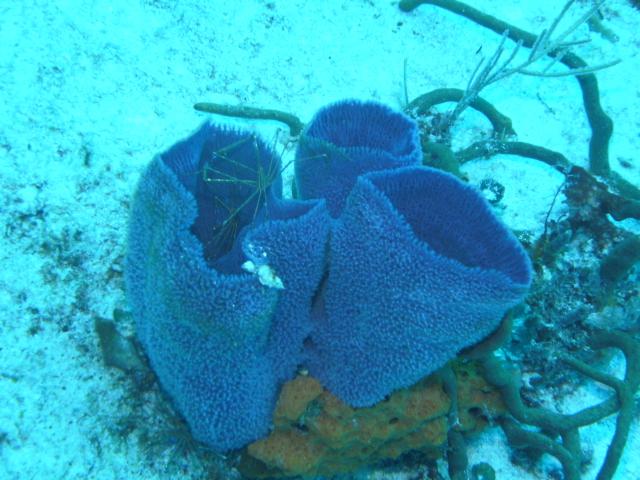
This shot was actually a surprise for me. I can recall Anya pointing out these two arrow crabs, but I didn't remember taking the photo, and it turned out to be a fairly nice one. These arrow crabs are cool little creatures. We saw more of them last year, but it was still nice to see a handful of them this year. Eventually I'm sure these guys will become macro subjects for me, but that'll have to be another dive trip.
Thanks for stopping by and checking out all the photos and dive stories from our trip to Cozumel this summer. I apologize for the blue color cast to most of the photos. Hopefully next time I'll do better at figuring out what I am doing wrong and come home with better photos.
- Bill






